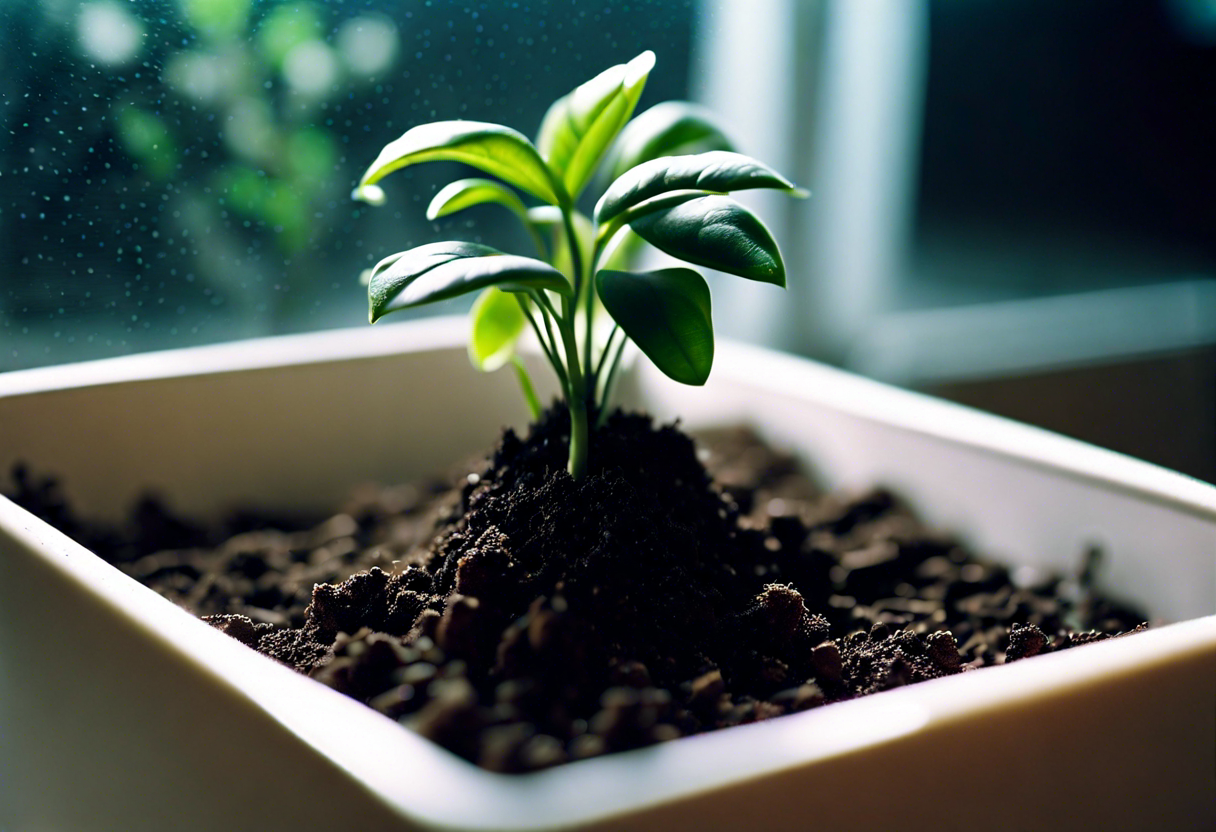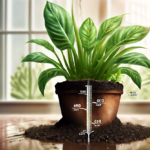Understanding the Importance of Indoor Plant Soil Testing
Indoor plants not only beautify our living spaces but also contribute to cleaner air and a healthier environment. However, to ensure their optimal growth and well-being, it is crucial to pay attention to the quality of the soil they are planted in. This is where indoor plant soil testing plays a vital role. Understanding the importance of indoor plant soil testing is the key to providing the right conditions for your plants to thrive.
One of the primary reasons why indoor plant soil testing is essential is because it allows you to assess the nutrient levels in the soil. Different plants have varying nutrient requirements, and deficiencies or excesses can lead to stunted growth, yellowing leaves, or even plant death. By testing the soil, you can determine the exact nutrient content and make necessary adjustments through fertilization or other methods.
Furthermore, indoor plant soil testing helps in identifying any imbalances in the soil pH. Most plants prefer a slightly acidic or neutral pH range for optimal growth. If the pH of the soil is too high or too low, it can hinder nutrient absorption, leading to nutrient deficiencies despite adequate fertilizer application. By testing the soil pH, you can make amendments to bring it within the desired range, promoting healthier plant growth.
In addition to nutrient levels and pH, indoor plant soil testing also aids in assessing the soil’s texture and composition. Some plants thrive in well-draining soil, while others prefer moisture-retentive soil. Testing the soil allows you to determine its texture and structure, helping you choose the right plants for specific areas of your home.
Another crucial reason to conduct indoor plant soil testing is to detect the presence of any contaminants or toxins. Household pollutants, such as lead, can find their way into the soil and pose a risk to both the plants and people living in the space. By testing the soil, you can identify any harmful substances and take appropriate steps to remediate or mitigate the issue.
Indoor plant soil testing is vital for creating a favorable growing environment for your indoor plants. By assessing nutrient levels, pH, texture, and potential contaminants, you can provide optimal conditions for your plants to thrive. Regular soil testing allows you to monitor the health of your indoor plants and make informed decisions to promote their well-being. Incorporate indoor plant soil testing as a routine part of your plant care regimen to ensure long-lasting beauty and vitality in your indoor garden.
Factors Affecting Indoor Plant Soil Quality
Ensuring the quality of indoor plant soil is crucial for the health and vitality of your plants. Various factors can impact the soil quality and, consequently, the growth of your indoor plants. Understanding these factors can help you create the ideal environment for your plants. Here are some key factors that affect indoor plant soil quality:
1. Nutrient Content: Nutrients are essential for plant growth and development. The soil should contain an adequate amount of essential nutrients like nitrogen, phosphorus, and potassium. Insufficient nutrient levels can lead to stunted or unhealthy plants.
2. pH Level: The pH level of the soil determines its acidity or alkalinity. Most indoor plants prefer slightly acidic to neutral soil with a pH range between 6.0 and 7.0. A pH that is too high or too low can hinder nutrient availability and affect plant growth.
3. Drainage: Proper drainage is vital for indoor plants as it prevents waterlogging and root rot. Soil with poor drainage can lead to water accumulation, causing roots to suffocate and die. Well-draining soil allows excess water to flow away, promoting healthy root growth.
4. Organic Matter: Organic matter such as compost, peat moss, or well-rotted manure improves soil structure and fertility. It enhances moisture retention, promotes beneficial microbial activity, and provides essential nutrients over time.
5. Texture and Structure: The texture and structure of the soil influence water retention and aeration. Ideal indoor plant soil should have a loose, well-aerated structure, allowing roots to penetrate easily. Sandy soil drains quickly but may require more frequent watering, while clay soil retains water but can become compacted.
6. Contaminants: Soil contaminants can have detrimental effects on plant growth. Indoor plant soil should be free from harmful substances, such as heavy metals, pesticides, or residues from previous chemical treatments. Testing the soil for contaminants is essential before planting.
7. Microbial Activity: Beneficial microorganisms play a crucial role in breaking down organic matter, releasing nutrients, and suppressing harmful pathogens. Healthy indoor plant soil should have a diverse and active microbial community.
8. Temperature and Humidity: Indoor plants thrive in specific temperature and humidity conditions. Soil temperature affects root growth, nutrient uptake, and microbial activity. Maintaining optimal temperature and humidity levels in the surrounding environment is essential for healthy soil.
By considering these factors, you can identify any deficiencies or imbalances in your indoor plant soil and take appropriate measures to improve its quality. Regularly monitoring these factors, along with conducting soil tests, can help you maintain a healthy and flourishing indoor garden.
Common Indoor Plant Soil Testing Methods
When it comes to maintaining healthy indoor plants, one of the key factors to consider is the quality of the soil they are planted in. Indoor plant soil testing is an essential practice that helps plant owners determine the overall health of the soil and make necessary adjustments to ensure optimal growing conditions. There are several common methods used to test indoor plant soil, each providing valuable insights into its composition and fertility.
One of the simplest and most widely used methods is the pH testing. pH level is a measure of the soil’s acidity or alkalinity and plays a crucial role in nutrient availability to the plants. Testing the pH of indoor plant soil can be done using a pH testing kit readily available at gardening centers. By following the instructions provided, you can easily determine the pH level of the soil and make necessary amendments to bring it within the recommended range for your specific indoor plants.
Another common method of indoor plant soil testing is nutrient testing. This involves analyzing the levels of essential nutrients present in the soil, such as nitrogen, phosphorus, and potassium, which are vital for plant growth. Nutrient testing can be done using commercial soil testing kits or by sending soil samples to a lab for analysis. The results will provide valuable information about the soil’s nutrient content and help determine if any fertilizer applications are required.
Soil texture testing is another important method used in indoor plant soil testing. The texture of the soil, which refers to the proportions of sand, silt, and clay particles present, greatly affects water retention and drainage capacity. To determine the soil texture, a simple soil feel test can be conducted. By taking a small amount of moist soil in your hand and squeezing it, you can assess whether it feels sandy, silty, or clayey. This information helps in determining the appropriate watering and drainage strategies to maintain a healthy soil environment for indoor plants.
In addition to these methods, there are also more advanced techniques available for indoor plant soil testing, such as soil biological testing. This involves analyzing the activity and diversity of soil organisms like bacteria, fungi, and earthworms. Soil biological testing provides insights into the soil’s fertility and its ability to support plant growth. However, this method requires specialized equipment and expertise, making it less commonly used by home gardeners.
Indoor plant soil testing is an important practice for maintaining healthy and thriving indoor plants. By utilizing common testing methods like pH testing, nutrient testing, and soil texture testing, plant owners can gain valuable insights into the soil’s composition and make informed decisions about fertilization, watering, and drainage. Regular soil testing allows for adjustments to be made to create optimal growing conditions, ensuring the long-term health and vitality of your indoor plants.
The Interpretation of Indoor Plant Soil Test Results
Soil testing is an essential step in maintaining healthy indoor plants. By analyzing the results of a soil test, you can gain valuable insights into the nutrient levels and pH balance of your indoor plant soil. This information allows you to make informed decisions about the type and amount of fertilizers and amendments to incorporate into your plant care routine. In this article, we will discuss how to interpret indoor plant soil test results effectively.
When you receive the results of your indoor plant soil test, there are several key elements to consider. The first is the pH level. The pH scale ranges from acidic (0-6.9) to neutral (7.0) to alkaline (7.1-14). Most indoor plants prefer a slightly acidic to neutral pH level, typically ranging from 5.5 to 7.0. If your soil pH is too high or too low, it can affect nutrient availability, potentially leading to nutrient deficiencies or toxicities. To adjust the pH level, you can use soil amendments such as sulfur or lime, depending on whether your soil is too alkaline or acidic, respectively.
Next, analyze the nutrient levels indicated on the soil test report. Essential macronutrients for plants include nitrogen (N), phosphorus (P), and potassium (K), commonly referred to as NPK. These nutrients are necessary for healthy plant growth and development. The soil test results will provide the nutrient levels in parts per million (ppm). Compare these nutrient levels to the recommended ranges for indoor plants. If any nutrients are deficient, you can choose a fertilizer that specifically addresses the lacking nutrient. Be cautious not to over-fertilize, as excessive nutrients can also be detrimental to your plants.
In addition to macronutrients, soil tests also provide information on micronutrients, such as iron (Fe), zinc (Zn), manganese (Mn), and others. These micronutrients are essential for various plant functions, and their deficiencies or toxicities can affect plant health. Ensure that the micronutrient levels in your soil are within the appropriate ranges for your indoor plants.
Furthermore, soil tests provide information on organic matter content, which is crucial for the overall health of indoor plant soil. Organic matter improves soil structure, promotes water retention, and enhances nutrient availability. Aim for a soil organic matter content of at least 3 to 5%. If your soil lacks organic matter, you can incorporate compost or aged manure to improve its quality.
Interpreting indoor plant soil test results allows you to make informed decisions about fertilization and amendments. Pay attention to the pH level, nutrient levels, micronutrients, and organic matter content indicated in the soil test report. By addressing any imbalances or deficiencies, you can maintain healthy indoor plant soil and promote optimal growth and vitality in your plants. Remember to conduct regular soil tests to continually monitor and optimize the conditions for your indoor plants.
Indoor Plants: Maintaining Healthy Soil for Optimal Growth
Tips for Maintaining Healthy Indoor Plant Soil
Proper soil maintenance is essential for the health and vitality of indoor plants. By providing the right nutrients, moisture, and structure, you can ensure that your plants thrive in their potting medium. Here are some valuable tips for maintaining healthy indoor plant soil:
1. Choose the Right Soil: Opt for a high-quality potting mix specifically formulated for indoor plants. Avoid using garden soil or dirt from your yard, as they may contain pests, diseases, or weed seeds that can harm your plants.
2. Provide Adequate Drainage: Ensure that your pots have drainage holes at the bottom to prevent water from pooling and causing root rot. Placing a layer of small stones or broken pottery pieces at the bottom of the pot can further improve drainage.
3. Water Properly: Overwatering can suffocate the roots, leading to root rot and other issues. Before watering, check the soil’s moisture level by inserting your finger about an inch into the soil. Only water if the top inch feels dry. Ensure that excess water can drain out of the pot.
4. Implement a Watering Schedule: Establish a consistent watering schedule based on your plants’ needs. Some plants require more frequent watering, while others prefer drier conditions. Research the specific watering requirements of your indoor plants to prevent under or overwatering.
5. Fertilize Regularly: Indoor plants rely on regular fertilization to obtain essential nutrients. Choose a balanced, slow-release fertilizer or use a liquid fertilizer diluted according to the instructions. Apply the fertilizer during the growing season to support healthy growth.
6. Prune and Remove Dead Leaves: Regularly inspect your plants for dead or yellowing leaves and promptly remove them. Pruning helps to maintain the overall health and appearance of the plant while preventing the spread of diseases or pests.
7. Repot As Needed: Over time, indoor plants may outgrow their pots, leading to a crowded root system. Repotting allows the roots to expand and acquire necessary nutrients more effectively. When repotting, use fresh potting soil to replenish nutrients and ensure proper drainage.
8. Monitor for Pests and Diseases: Inspect your indoor plants regularly for signs of pests such as aphids, spider mites, or mealybugs. Also, be on the lookout for any disease symptoms such as wilting or discoloration. Addressing pest and disease issues promptly can prevent further damage to the soil and plants.
Maintaining healthy indoor plant soil is crucial for the long-term success of your plants. Providing the right soil conditions, appropriate watering, regular fertilization, and proper care will promote vigorous growth and enhance the overall well-being of your indoor plants. By following these tips, you can create an optimal environment for your beloved green companions.
Conclusion
Indoor plant soil testing is a critical aspect of maintaining healthy and thriving plants indoors. By understanding the importance of regular soil testing, we can ensure that our indoor plants receive the optimal nutrients and growing conditions they need to prosper.
Various factors can affect indoor plant soil quality, such as pH levels, nutrient deficiencies, and excess salt accumulation. By identifying and addressing these issues through soil testing, we can create an environment that is conducive to plant growth and vitality.
There are several common methods that can be used to test indoor plant soil, including pH testing kits, nutrient testing kits, and soil texture analysis. Each method provides valuable insights into the composition and condition of the soil, allowing us to make informed decisions regarding necessary adjustments and amendments.
Interpreting indoor plant soil test results may seem daunting at first, but with the help of professionals or online resources, it becomes a straightforward process. Understanding the optimal pH range and nutrient levels required for specific plant species enables us to tailor our care routines accordingly, creating conditions that favor growth and development.
To maintain healthy indoor plant soil, several tips can be implemented. First, it is essential to monitor watering practices and ensure proper drainage to prevent waterlogging and root rot. Additionally, incorporating organic matter, such as compost or well-rotted manure, can improve soil structure, fertility, and water-holding capacity.
Regularly monitoring pH levels and adjusting them when necessary is crucial, as different plants thrive in varying pH ranges. Fertilizer applications should also be appropriately timed and balanced to prevent nutrient deficiencies or excesses that can harm plant health.
Practicing proper hygiene in the indoor garden is essential. Removing dead leaves or debris promptly can prevent the buildup of pathogens and pests. Additionally, rotating plant locations periodically helps ensure even light exposure, prevents overcrowding, and allows plants to receive adequate airflow.
Indoor plant soil testing plays a vital role in providing optimal growing conditions for our indoor plants. By understanding the factors that affect soil quality, utilizing appropriate testing methods, interpreting test results, and implementing proper care and maintenance techniques, we can create a thriving indoor garden filled with healthy and vibrant plants. So, let us embrace the benefits of soil testing and enjoy the beauty and benefits of indoor gardening.


